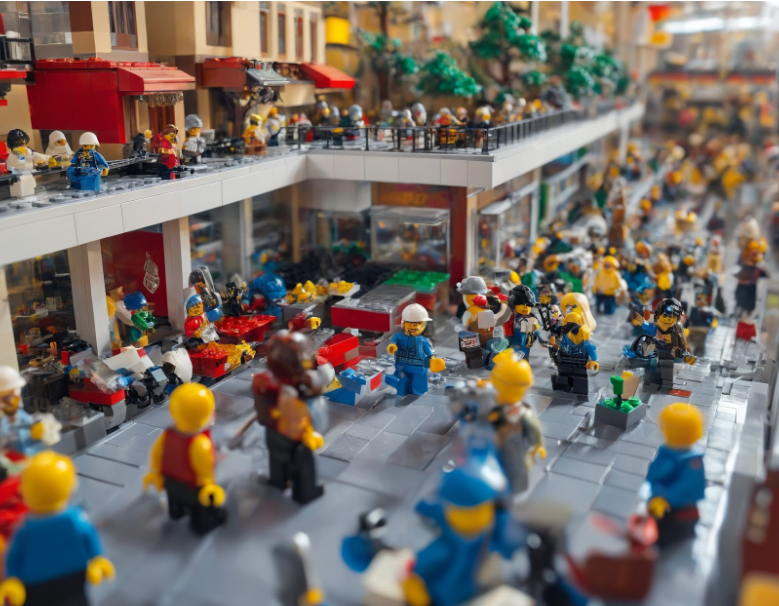News
Lego Sales Surge Amidst Toy Industry Slump

Lego, the iconic Danish toymaker, is defying the odds in a challenging market. In the first half of 2024, while many toy companies struggled, Lego sales reported an increase of 13%, reaching 31 billion Danish krone (approximately $4.65 billion). This impressive growth starkly contrasts with the broader toy industry, which has been grappling with a downturn fueled by inflation and changing consumer behaviors.
Lego Sales: Building Success Brick by Brick
Lego's success is largely attributed to its diverse product lineup that appeals to both children and adults. From intricate models like the Eiffel Tower and Titanic under the Lego Icons series to creative offerings like Lego Creator, the brand continues to captivate a wide audience. The partnership with Epic Games' Fortnite has also strengthened its position in the market, allowing Lego to tap into the gaming community.
In contrast, competitors like Mattel and Hasbro have faced significant challenges. Mattel’s sales dipped by 1% in the first half of 2024, and Hasbro reported a steep 21% decline in net revenue. These companies are struggling with post-pandemic market adjustments and, in Hasbro's case, the impact of divesting its eOne division.
A Global Strategy with Local Focus
Lego's strategy of expanding its retail presence has been pivotal in sustaining its growth. The company opened 40 new stores in the first quarter, with half of them in China. However, sales in China have been flat, reflecting a cautious consumer sentiment in the region. Despite this, Lego remains optimistic about the long-term potential in China, planning to open 20 more stores there in the second half of the year.
Even as China presents a number of challenges, Lego is shifting its focus to Europe and North America, where demand remains robust. The company’s ability to pivot and prioritize regions with higher consumer engagement has been crucial in maintaining its momentum.
Sustainability: A Key Growth Driver for Lego Sales
Another significant factor in Lego's success is its commitment to sustainability. The company has nearly doubled the use of renewable and recyclable materials in its bricks compared to 2023. CEO Niels Christiansen emphasized that this effort is part of a broader strategy to ensure long-term sustainability without passing the additional costs onto consumers. Lego aims to source half of its raw materials from sustainable sources in the coming years. By paying a premium for sustainable materials, Lego is not only advancing its environmental goals but also encouraging suppliers to expand production capacity for these materials.
This shift is part of Lego’s broader initiative to address environmental concerns. In recent years, the company has faced criticism for producing excessive amounts of plastic bricks, contributing to environmental waste. Lego has responded by investing heavily in research and development to create bricks made from sustainable materials. These new materials are more expensive, but the company is committed to not passing these costs onto consumers, recognizing the long-term value of environmental responsibility.
Learning from the Past: Overproduction Challenges
Lego’s journey has not been without its challenges. In previous years, the company faced issues of overproduction, particularly during the pandemic when demand for at-home entertainment skyrocketed. As restrictions eased, Lego found itself with a surplus of bricks, leading to an internal reassessment of production strategies.
The company learned from this experience, tightening its supply chain and aligning production more closely with actual demand. This strategic pivot has allowed Lego to navigate the complexities of the current market, avoiding the pitfalls that have ensnared many of its competitors.
Everything is Awesome for Lego Right Now
Looking forward, Lego expects to continue its double-digit sales growth throughout 2024. This optimism is grounded in its strong performance in the first half of the year and its ongoing expansion into key markets. With around 300 new sets launched in the first six months and plans to open nearly 100 more stores worldwide, Lego shows no signs of slowing down.
As the toy industry faces ongoing challenges, Lego's ability to adapt and innovate stands out. The company's strategic focus on sustainability, regional market shifts, and a diverse product range continues to propel it forward, solidifying its position as a leader in the global toy market.
Are you a fan of Lego? Do you foresee Lego gaining an even bigger presence in the worldwide toy industry? Let us know what you think!



